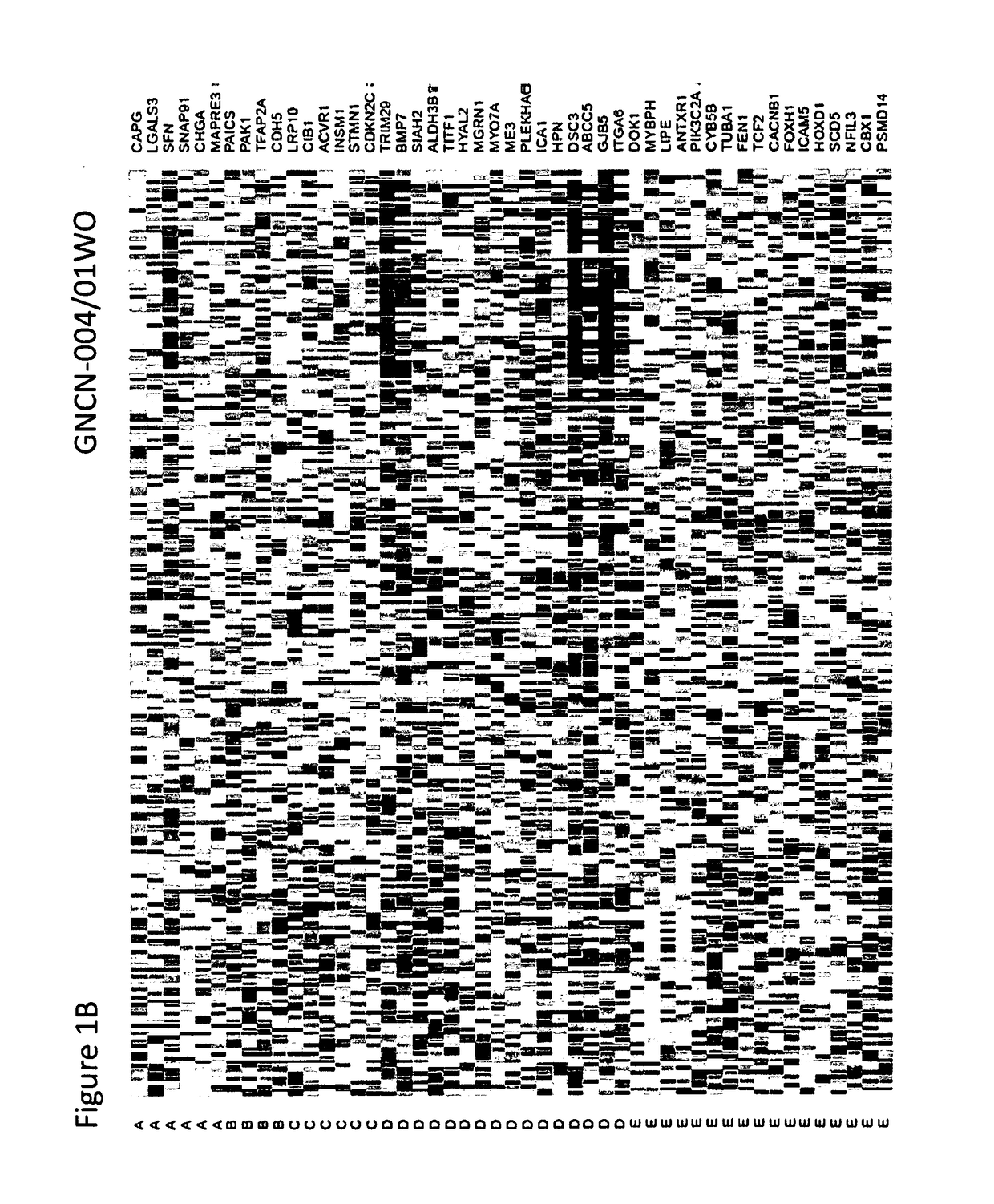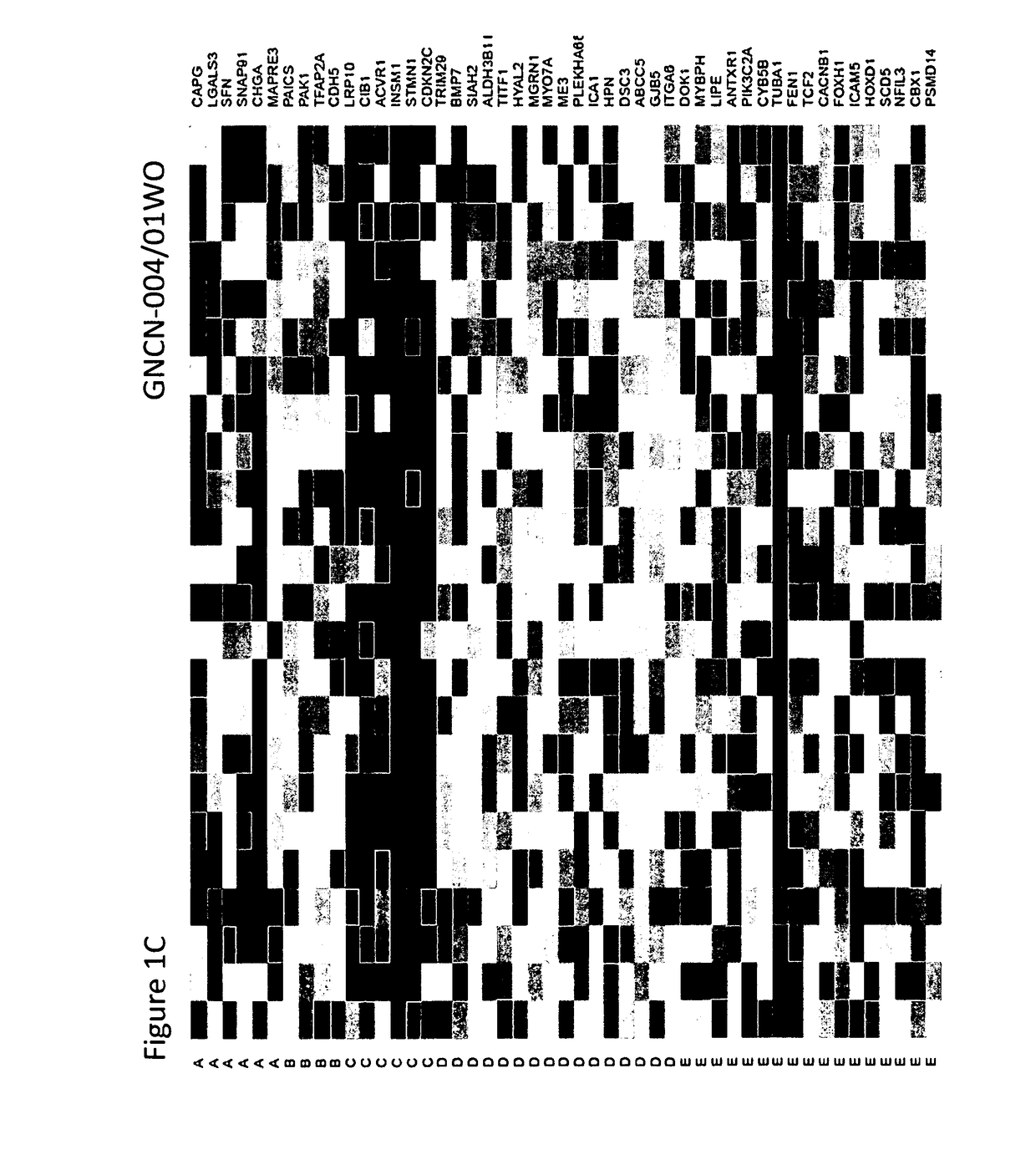Methods for typing of lung cancer
a typing method and technology for lung cancer, applied in the field of typing methods for lung cancer, can solve the problems of limited intra-pathologist agreement and inter-pathologist agreement in studies and the current diagnostic standard is not suitable, and the agreement of histologic diagnosis reproducibility is limited and even less in the field of typing methods
- Summary
- Abstract
- Description
- Claims
- Application Information
AI Technical Summary
Benefits of technology
Problems solved by technology
Method used
Image
Examples
examples
[0095]The present invention is further illustrated by reference to the following Examples. However, it should be noted that these Examples, like the embodiments described above, is illustrative and is not to be construed as restricting the scope of the invention in any way.
Methods
[0096]Several publically available lung cancer gene expression data sets including 2,168 lung cancer samples (TCGA, NCI, UNC, Duke, Expo, Seoul, Tokyo, and France) were assembled to validate a 57 gene expression Lung Subtype Panel (LSP) developed to complement morphologic classification of lung tumors. LSP included 52 lung tumor classifying genes plus 5 housekeeping genes. Data sets with both gene expression data and lung tumor morphologic classification were selected. Three categories of genomic data were represented in the data sets: Affymetrix U133+2(n=883) (also referred to as “A-833”), Agilent 44K(n=334) (also referred to as “A-334”), and Illumina RNAseq(n=951) (also referred to as “1-951”). Data sourc...
example 2
er Subtyping of Multiple Fresh Frozen and Formalin Fixed Paraffin Embedded Lung Tumor Gene Expression Datasets
[0114]Multiple datasets comprising 2,177 samples were assembled to evaluate a Lung Subtype Panel (LSP) gene expression classifier. The datasets included several publically available lung cancer gene expression data sets, including 2,099 Fresh Frozen lung cancer samples (TCGA, NCI, UNC, Duke, Expo, Seoul, and France) as well as newly collected gene expression data from 78 FFPE samples. Data sources are provided in the Table 12 below. The 78 FFPE samples were archived residual lung tumor samples collected at the University of North Carolina at Chapel Hill (UNC-CH) using an IRB approved protocol. Only samples with a definitive diagnosis of AD, carcinoid, Small Cell Carcinoma (SCC), or SQC were used in the analysis. A total of 4 categories of genomic data were available for analysis: Affymetrix U133+2 (n=693), Agilent 44K (n=344), Illumina® RNAseq (n=1,062) and newly collected q...
PUM
| Property | Measurement | Unit |
|---|---|---|
| diameter | aaaaa | aaaaa |
| morphology | aaaaa | aaaaa |
| NanoString assay | aaaaa | aaaaa |
Abstract
Description
Claims
Application Information
 Login to View More
Login to View More - R&D
- Intellectual Property
- Life Sciences
- Materials
- Tech Scout
- Unparalleled Data Quality
- Higher Quality Content
- 60% Fewer Hallucinations
Browse by: Latest US Patents, China's latest patents, Technical Efficacy Thesaurus, Application Domain, Technology Topic, Popular Technical Reports.
© 2025 PatSnap. All rights reserved.Legal|Privacy policy|Modern Slavery Act Transparency Statement|Sitemap|About US| Contact US: help@patsnap.com



